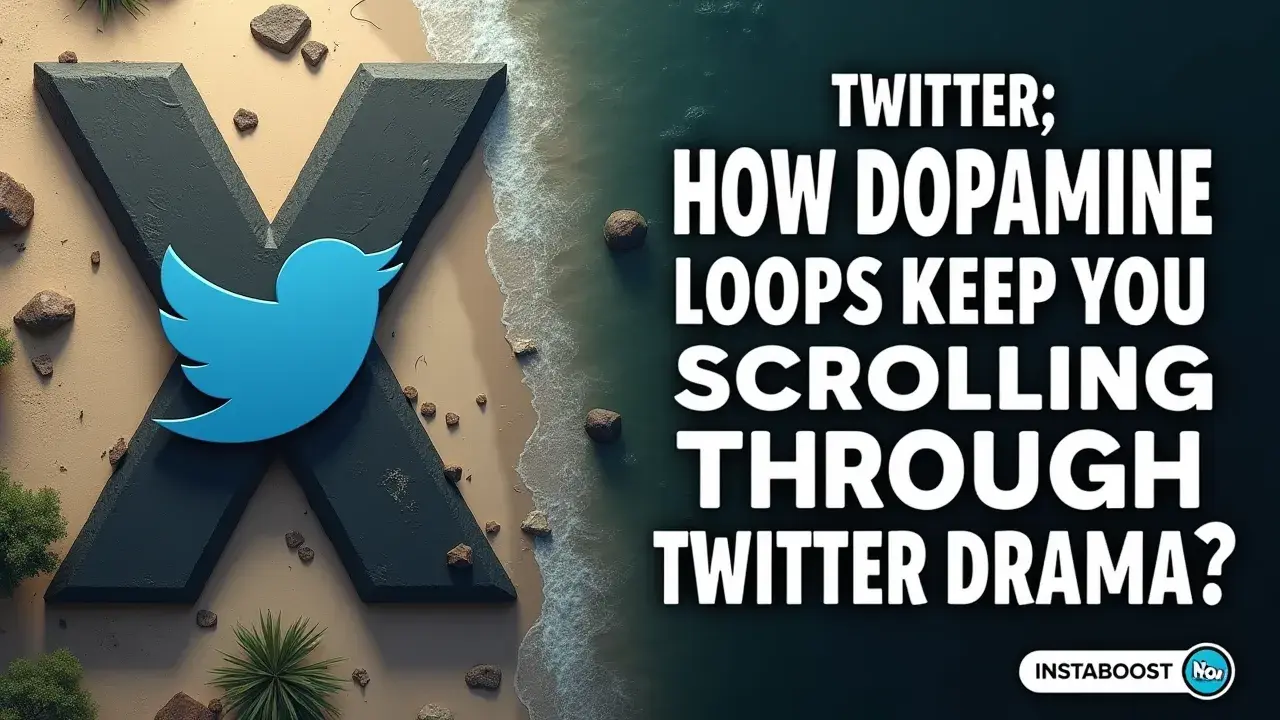Twitter: Do Dopamine Loops Keep You Scrolling Through Drama?
Dopamine-driven feedback loops can make Twitter drama feel hard to resist. Rapid notifications, unpredictable replies, and intermittent social rewards nudge repeated checking and extend scrolling through conflicts and debates. When timelines surface heated exchanges and quick feedback, the novelty and emotional salience reinforce continued engagement. Recognizing these cues helps align use with intent, favoring mindful sessions that prioritize relevance over endless back-and-forth.
The Science Behind Twitter’s Addictive Appeal
Twitter isn’t only a place to glance at the news or follow public arguments – it’s actually set up to make you want to return again and again. There’s this thing called the dopamine loop at work. Each time you see a new notification or someone shares your post, your brain gets a little reward, and that feeling encourages you to keep scrolling. That’s not something that happened by accident.
The feed is built to deliver bits of unexpected news, debates, and reactions, which makes it hard to predict what you’ll find next. Psychologists call this “variable reward” – it’s kind of like a slot machine, where you never really know when the next interesting thing will pop up, so you keep pulling the lever, or in this case, refreshing your feed.
The feed is built to deliver bits of unexpected news, debates, and reactions, which makes it hard to predict what you’ll find next. Psychologists call this “variable reward” – it’s kind of like a slot machine, where you never really know when the next interesting thing will pop up, so you keep pulling the lever, or in this case, refreshing your feed.
There’s a reason so many creators have started talking about X for creators when describing how the platform keeps people engaged. The constant back-and-forth, the arguments, and the hot takes aren’t random – they’re part of how the whole thing works. People like to call Twitter a public square, but it feels more like being part of a study on how people react to endless streams of information and conflict.
Even when people say the platform is exhausting or negative, they still catch themselves scrolling through replies or checking for updates. The drama isn’t just background noise – it’s something that quietly hooks you in, and even when you notice it, it’s hard to step away.
Even when people say the platform is exhausting or negative, they still catch themselves scrolling through replies or checking for updates. The drama isn’t just background noise – it’s something that quietly hooks you in, and even when you notice it, it’s hard to step away.

Why Twitter’s Design Hooks You – Not By Accident
It isn’t really about producing a nonstop stream of posts – it’s more about zeroing in on something that catches your attention. Twitter seems to have figured this out better than most places online. The way it works isn’t by overwhelming you with information, but by tuning each part of the experience so that it keeps you coming back, always curious about what’s next.
Twitter’s pull isn’t just about sharing links or reading threads; it’s about the way it keeps you watching for another like, a retweet, or the next bit of controversy in your feed. That’s where these little dopamine loops come in – the quick hit you feel when you see a new notification, when a thread suddenly takes off, or when someone posts something opaque that you can’t help but click on. The folks designing these platforms know that those small, unpredictable rewards are what make us keep scrolling. There’s research showing that random rewards – like the way slot machines work, or how the refresh button feels – are especially good at holding our attention.
Twitter’s feed isn’t just a list of updates; it’s always building a sense that something might happen next, and that’s hard to walk away from. It’s not surprising, then, that even things as simple as watching your follower count tick upward, or noticing how easy it is to order X followers, become tangled up in the whole system of feedback and anticipation. This isn’t an accident or a quirk of the internet; it’s something that’s built in on purpose, using data about our habits and what we’re likely to keep checking. If you’ve ever found yourself caught up in an argument or unable to ignore a tweet that annoys you, you’ve already felt how it works. For anyone thinking about how to spend their time online, or even how it feels to be nudged by these features, it’s something worth noticing.
Unplugging the Loop: Practical Ways to Reclaim Your Focus
For a while, I didn’t really notice how much slipped through my own filter. It wasn’t until I paid attention to the way Twitter sort of nudged me along that things started to click. The way notifications pop up, the way the feed keeps rolling – it’s set up so you don’t think too hard about coming back again and again. The first thing that helped was turning most notifications off. Those little pings and badges were grabbing my attention more than I wanted to admit, and once I got rid of them, things felt a bit calmer. I put a sticky note on my screen with a daily Twitter limit, something I could actually see, and started logging out between sessions to make the whole thing less automatic.
But I think the part that stuck was finding something else to do with that extra attention. When I caught myself reaching for Twitter out of habit, I’d pick up a book or read a long article instead – even slow down for a real conversation that wasn’t about whatever was trending online. If you’re juggling multiple accounts, tools like INSTABOOST can take care of the routine stuff so you’re not looking for excuses to check in constantly.
I remember stumbling on a site where you could purchase Twitter likes and realizing how many different ways there are to let the app shape your behavior without even noticing. All this made it easier to notice when the app was pulling me in, and from there, using it started to feel more like a choice than a reflex. There’s still a pull, obviously, but it’s different now.
I remember stumbling on a site where you could purchase Twitter likes and realizing how many different ways there are to let the app shape your behavior without even noticing. All this made it easier to notice when the app was pulling me in, and from there, using it started to feel more like a choice than a reflex. There’s still a pull, obviously, but it’s different now.















